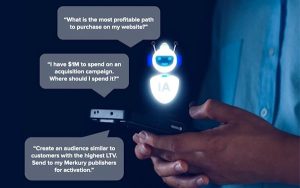— October 17, 2017
It has often been said of the internet that content is king. Create fabulous content and it will get noticed by savvy and eagle eyed content consumers and spread across social media like wildfire, garnering you a bucket load of brand exposure in the process.
This is perhaps one of the most misleading premises in online marketing today. Content quality is undoubtedly important, there’s no doubt about that but that doesn’t make it king. Without proper marketing activation and a robust planning methodology, your videos might be absolutely brilliant but just won’t gain the attention they deserve and need to justify their creation. In other words the chances of any given piece of online content joining the sea of orphan content, that sits unloved and unnoticed online, is far greater in the absence of a plan.
In this article, I want to look at the phenomenon of orphan content and how to avoid it by implementing a proper planning methodology that informs and shapes the creation and activation processes,. We’ll also look at the importance of evergreen content and how to get the most from your video content through proper activation. Let’s start though by exploring the scale of the problem and how content ends up orphaned in the first place.

StockSnap / Pixabay
What Leads to Orphan Content?
Despite the inevitable ambiguity around the term ‘orphan content’ let’s look at some stats. In 2015, Moz and Buzzsumo conducted some research looking at content shares and referring domain links on a random sample of content. I’ve outlined some of the headline findings below.
- Across 100,000 posts over 50% had two or less Facebook shares, likes or comments
- Across that same sample 75% had no external links
- Amongst the various content types surveyed list posts and videos attracted the most shares, with video being the most popular of these by far
- Of 99,520 videos surveyed 17,708 was the average number of shares, compared to 10,734 for list posts, 1782 for ‘how to’ articles and 1443 for ‘why’ articles.
In a separate study, web marketing company Fractl looked at why people share content and found the following:
- 44% of respondents surveyed said they shared on social media to entertain
- 25% of respondents surveyed said they shared on social media to educate
- 20% of respondents surveyed said they shared on social media to reflect who they are as a person
- 10% of respondents surveyed said they shared on social media to support a cause or organisation
Comparing this last stat to the first stat can tell us a lot about why so much content ends up orphaned. With a more than 4 times chance of being shared, it really does pay for brands to be making content that’s entertaining.
The problem of orphan content isn’t just restricted to the consumer market either. A 2013 study by Sirius Decisions found that between 60-70% of content that is created by B2B marketing departments sits unused. This is a huge waste of time and resources and shows once again, that without a proper activation strategy in place, content can end up very lonely indeed.
It’s difficult to say with 100% accuracy exactly how much orphan content there is online. In fact the term orphan content doesn’t mean that no one at all has seen a given piece of content, merely that it has not got the love and attention it deserves.
With that loose definition in mind, there are three distinct reasons that content can end up as orphan content. These are:
-
Poor content quality:
No matter how good you promote a piece of content, if it isn’t very good the it won’t get shared and it won’t do your brand any favours. In other words, you can’t polish a turd. If the content is truly awful then it may even have a net negative affect. The phrase any publicity is good publicity does not apply in this instance.
-
Poor market activation strategy:
Marketing activation is the process of pushing your content to its intended audience through any number of marketing or media channels. Get this wrong and it doesn’t matter how great your content is, it just won’t get enough attention.
-
Poor content repurposing:
As well as a wide audience reach, longevity is another characteristic of successful content. If you want to avoid your video becoming a flash in the pan then it pays to keep them in the spotlight.
Creating powerful, engaging and memorable videos is something we’ve touched on before in this blog, so for the purpose of this article let’s focus on the last two factors.

Creating an Effective Market Activation Strategy
According to Russell Perry from McCann London content value is often lost through “a series of disconnected, tactical executions” instead of taking a “seamless joined up approach.” I’ve quoted this before in a previous article looking at marketing activation, but I’m quoting it again because, for me, it gets right to the nub of the issue.
It is the disconnected nature of poorly organized marketing strategies that is responsible for the vast majority of orphaned marketing related content online; in particular brand films. As much as content quality will always be a prerequisite for shareability, the importance of an activation strategy cannot be understated.
Successful activation is in itself built off the back of a proper planning process, which involves understanding your audience, your business objectives, what your competitors are talking about, as well as what is creating a buzz in your industry in general. Basing the content ideation process on this type of planning methodology will allow you to formulate core creative ideas that have the potential for building real audience traction and engagement.
From your core creative idea, will come your activation strategy. This can be broken down into three distinct areas:
-
Find and Optimise:
- Optimising your content for search by tying it into your wider SEO strategy.
- Making sure all your CTAs are in place and that your brand, products and/or services are properly represented and described.
- Ensuring your content can be integrated into all relevant digital channels and that individual pieces of content fits with the intended audience.
Campaign Assets
- Taking stills from the shoot, as well as behind the scenes footage, cast and crew interviews and other secondary filming
- Info visuals, blog posts, press releases
Push to Audience
- Promoting your video via all your social media channels
- Electronic customer relationship management through emails, website and other established communication channels
- Paid social media and search advertising to target demographics and search terms
- PR via blogger and journalist outreach
Creating an effective activation strategy means getting the best out of your potential marketing channels, whether they be owned, earned or bought media. Understanding the benefits and limitations of each of these channels, as well as how they can work together, is important to get your content the love it deserves. A good activation strategy will make it hard for your target audience not to find your video.
Keeping Content Fresh
One of the major contributors to the proliferation of orphan content online is to do with the proliferation of content in general. By devoting too much time to generating a steady stream of new content, content marketers aren’t maximising ROI on individual pieces of content. Rand Fishkin on Moz puts is like this:
“The biggest content marketing misconception is assuming your audience will take an action towards purchase after reading just one piece of your content.”
In other words content creation and activation are only the first steps in a process that is ongoing. For your videos to avoid becoming orphan content they need some long term love and attention. Let’s look at some tactics for keeping your videos attracting new viewers months or even years after they were first published.
-
Create evergreen content
Evergreen content is that which doesn’t have a shelf life. Whilst many of your videos will eventually date in the sense that you move from one brand campaign to another, it pays to create insightful and relevant content that will be picked up by interested audiences months or even years into the future. In that sense, many of your ‘help’ videos should be evergreen content.
-
Re-promote content
Marketing activation shouldn’t be a single process but an ongoing strategy and as such you should be looking at ways you can re-promote your future in the months ahead. Put together a schedule and brainstorm ways you can link future content back to your older content.
-
Create complimentary content
All too often businesses and brands produce individual marketing films without thinking of all the other content that can be derived from it. If you’re shooting a big piece of ‘hero’ content – let’s say a TV commercial or big brand film – then why not shoot some behind the scenes footage? Also getting stills from the shoot is perfect social media clickbait. The trick here is to think of your marketing narrative as non-linear and try to create complimentary content that feed into it across a multitude of platforms.
-
Curate content
Content curation is what drives so much of social media so looking at new ways of re-presenting your own content alongside other third party content is a powerful way of carving out a brand identity. By mixing your content in with that from other individuals, organisations and businesses you can also start to build networks and encourage engagement with your potential audience.
-
Update your content
Whether or not you create evergreen content, many of your videos will become dated after a time. If they were successful first time round, then think about ways you can update them. You might want to change or update the animation or motion graphics in them, or perhaps change the soundtrack. Maybe you just want to repackage the content in a different way. With lengthy software demos or training videos for example you might want to serialise them before putting them on YouTube. Alternatively you could create a yearly ‘showreel’ with your best content, something we’ve been doing here at Aspect for some time.
Conclusion
The huge amount of orphan content across the web is perhaps not entirely unsurprising, given the vast quantities of content being uploaded every day. That being said, with the right planning and marketing activation strategy in place, it is avoidable. Taking the time to treat each piece of content with the time and attention it deserves will see ROI increase and orphan content become a thing of the past.
Digital & Social Articles on Business 2 Community
(45)







